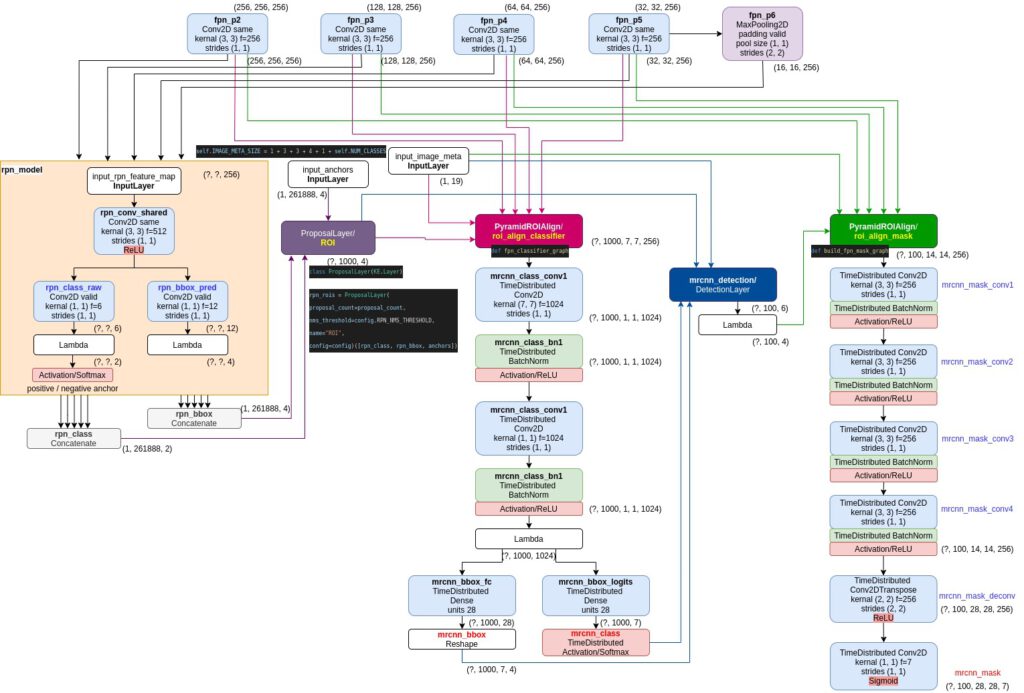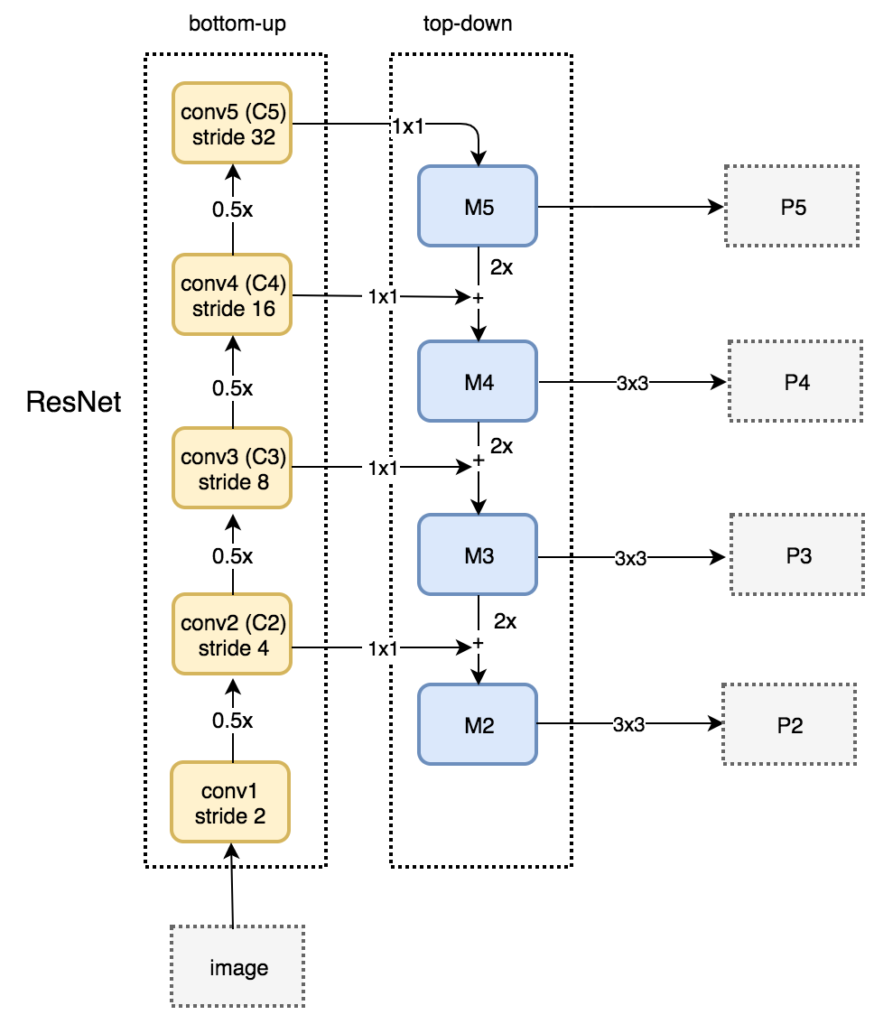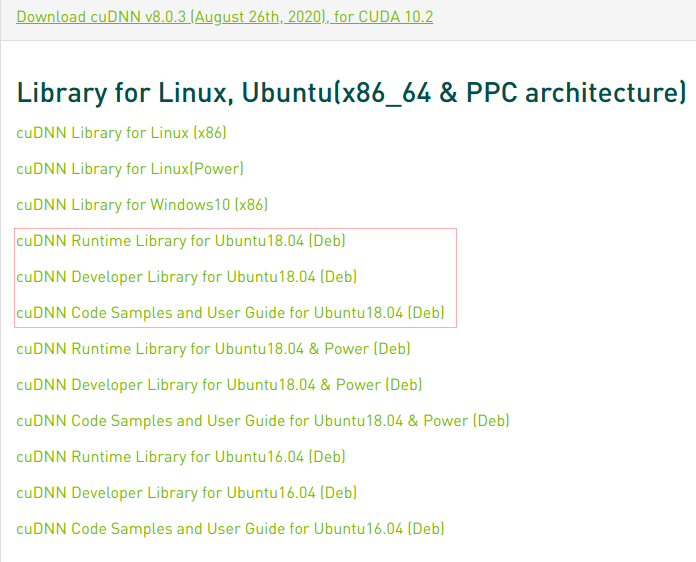ช่วงนี้กำลังแกะรอย Mask R-CNN Architecture พอดีต้องพรีเซนต์งาน แต่ยัง งงๆกับโครงสร้างข้างในอยู่
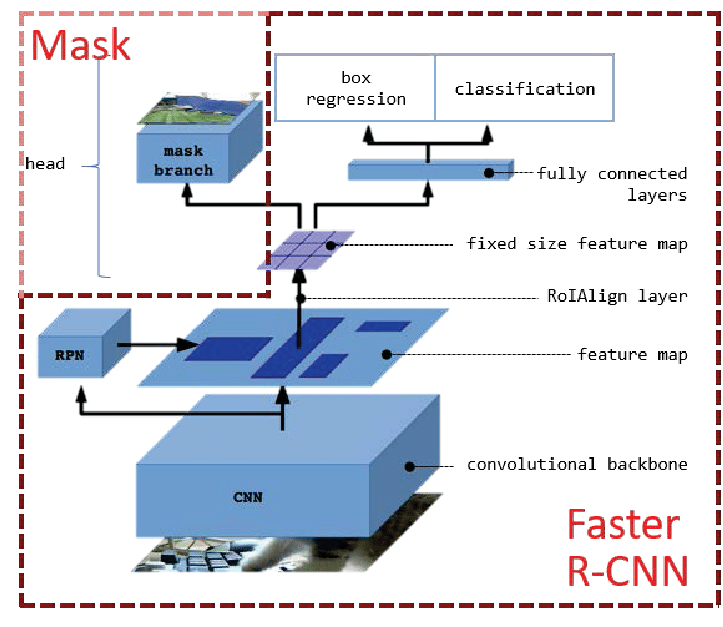
เริ่มจากรูปนี้ที่เห็นแพร่หลาย ซึ่งไม่ได้มาจากคนเขียนเปเปอร์ แต่มาจากคนที่ทำ slide รีวิวงานนี้อีกที รูปนี้ทำมาดูเข้าใจง่าย ก็คือ Mask R-CNN เป็น patch เสริม (เพิ่ม Segmentation) ของ Faster R-CNN (ที่ทำแค่ Object detection)
หลักๆแบ่งเป็น 4 ส่วน
1. CNN เอาไว้ extract features จากรูป input ได้เป็น feature map ออกมา
2. RPN เอาไว้ propose region ส่วนที่น่าจะเป็น object
3. RoIAlign เอาไว้ resize feature map (a region ที่อยู่ใน feature map) ให้มี size เท่ากันให้หมด (กำหนด size ล่วงหน้าไว้ในconfig)
เพราะการ train network เราจะ feed input ที่เป็น tensor (array หลายมิติ) เข้าไปขนาดมันเลยต้องแปลงให้เท่ากันจะได้ใส่ใน tensor ได้
4. Head : Classification / Object detection/ Mask prediction
ในส่วนแรกที่เป็น Feature extraction เราจะเลือกโครงสร้างได้ 2 แบบคือ Conv network ธรรมดา จะใช้ VGG หรือ Resnet เป็น Backbone ก็ได้ กับอีกแบบคือ เสริม Feature Pyramid Network (FPN) เข้าไป ซึ่งจะช่วงให้ learn object เล็กๆได้
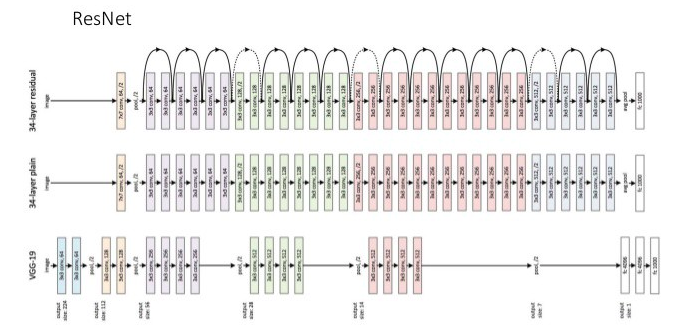
โค๊ด Mask R-CNN ต้นฉบับเป็นของ Facebook เขียนด้วย pytorch
แต่เรายังไม่เคยเขียน pytorch เลยเลือกใช้โค๊ดของ Matterport ที่เขียนด้วย keras
คิดว่า Architecture ข้างในของทั้ง 2 version คงไม่เหมือนกัน100%
ตัวที่ใช้อยู่นี้ backbone เป็น Resnet101 with FPN
เวลาเรียกฟังก์ชันสร้างโมเดล Mask R-CNN แล้ว เราสามารถ save model นั้นลงไฟล์
keras.models.save_model(model.keras_model,"mask_rcnn.hdf5")เอาไฟล์ ไปเปิดในโปรแกรม Netron ก็จะเห็นโครงสร้างอันยาวเหยียด

หรือจะ plot model แล้ว save รูปดูก็ได้
#!conda install pydot -y
#!conda install python-graphviz -y
from keras.utils import plot_model
plot_model(model, show_shapes=True, to_file='model.png')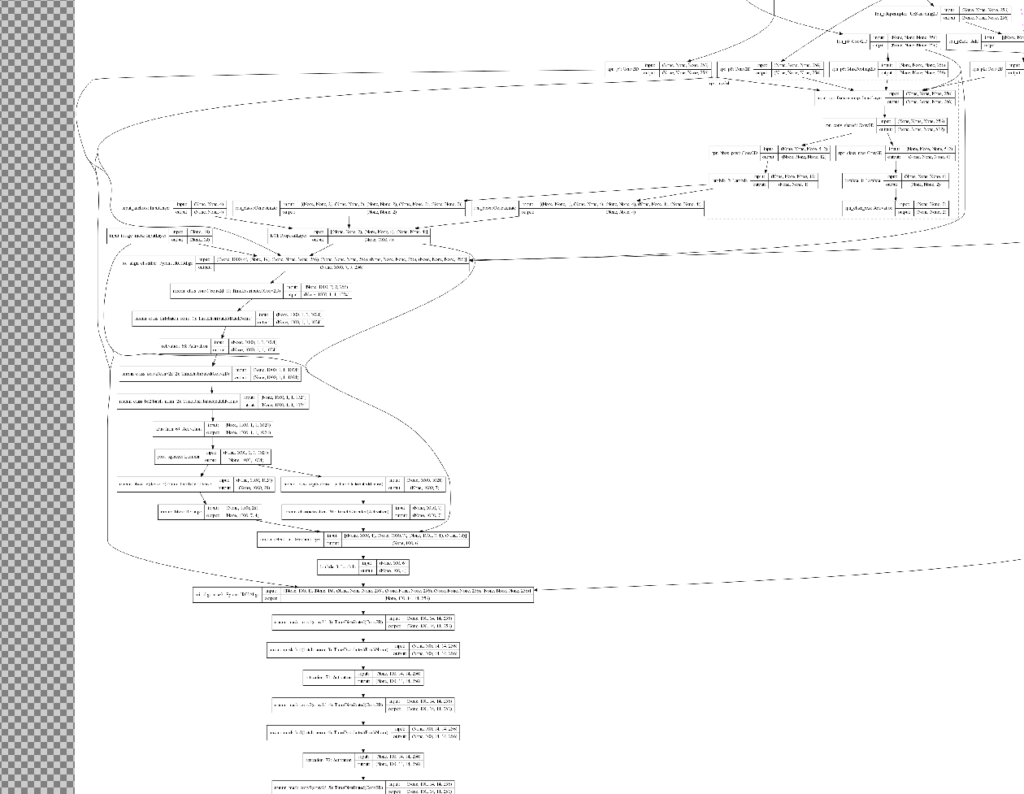
ก็จะได้กราฟยาวเหยียดคล้ายๆกัน
คือในส่วนหลังจาก Feature extraction แล้ว จะมีการเรียก class พวก ProposalLayer, PyramidROIAlign, DetectionLayer ทำให้กราฟที่ได้จาก Netron กับ plot_model() จะมีความแตกต่างกันนิดหน่อย
กราฟของ model นี้ ถ้าเริ่ม train model แล้ว ก็สามารถไปดูได้ใน tensorboard ได้เหมือนกัน
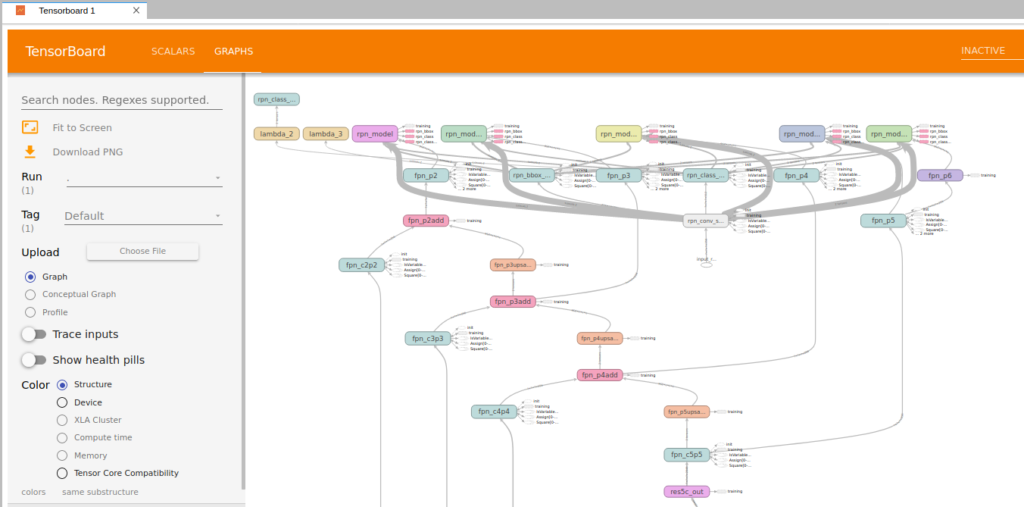
แล้วก็ ในไฟล์ inspect_model.ipynb จะมีตัวอย่างการใช้ฟังก์ชัน run_graph() ซึ่งช่วยให้เรารู้ขนาดของ output ตอนที่ออกมาจากแต่ละ layer ได้ + จะใช้ display_images() โชว์หน้าตาของ ouput ณ ตอนนั้น มาดูก็ได้
# Get activations of a few sample layers
activations = model.run_graph([image], [
("input_image_meta", tf.identity(model.keras_model.get_layer("input_image_meta").output)),
("rpn_bbox", model.keras_model.get_layer("rpn_bbox").output),
("fpn_p6", model.keras_model.get_layer("fpn_p6").output),
])input_image_meta shape: (1, 19) min: 0.00000 max: 1024.00000 float32
rpn_bbox shape: (1, 261888, 4) min: -18.46270 max: 71.82899 float32
fpn_p6 shape: (1, 16, 16, 256) min: -19.04598 max: 21.66270 float32tp_layer = np.transpose(activations["fpn_p6"][0,:,:,:], [2, 0, 1]) #order
display_images(tp_layer, cols=64)
อย่างไรก็ตาม ก็ยังประติดประต่อ โครงสร้างของ Mask R-CNN ไม่ได้อยู่ดี เลยต้องเขียนแผนผัง layer ขึ้นมาเองอีกรอบ (ใช้โปรแกรม drawio)
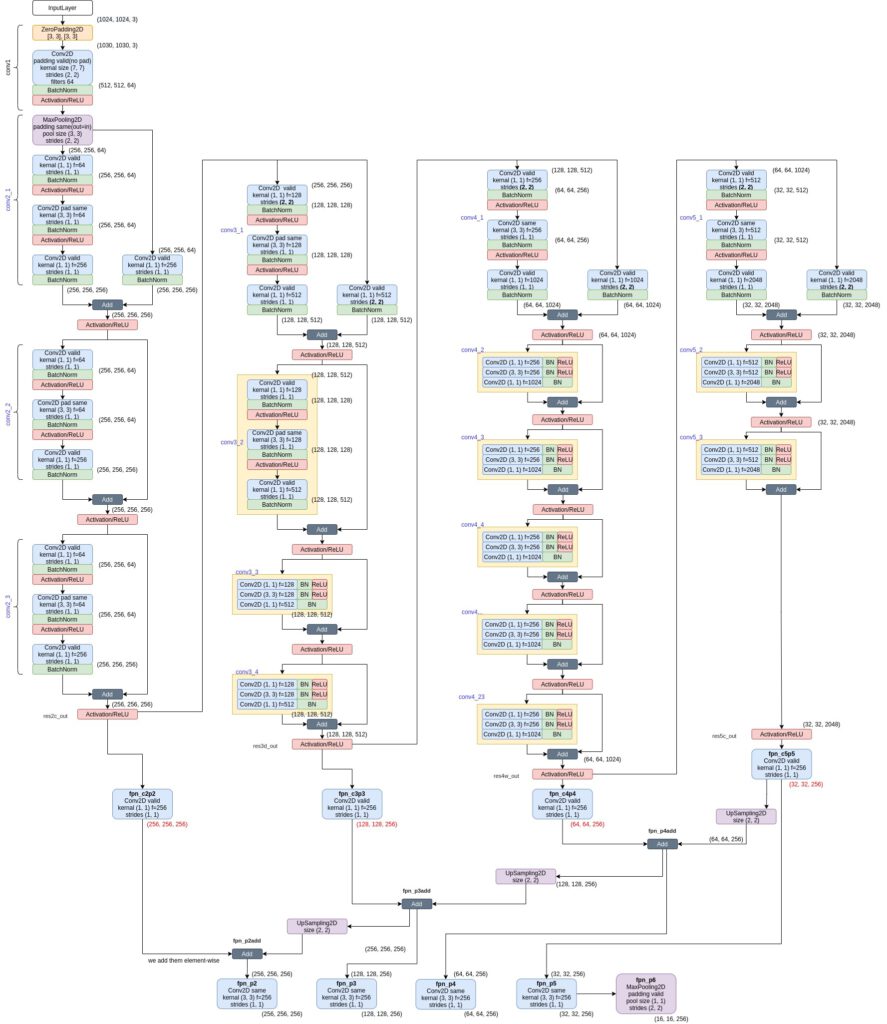
ภาพบนแสดง layers ในส่วน Feature extraction ที่เป็น Resnet101 + FPN
ภาพล่างแสดงส่วนที่เป็น RPN, ROIAlign, Classification, Object detection (box regression), Mask prediction
